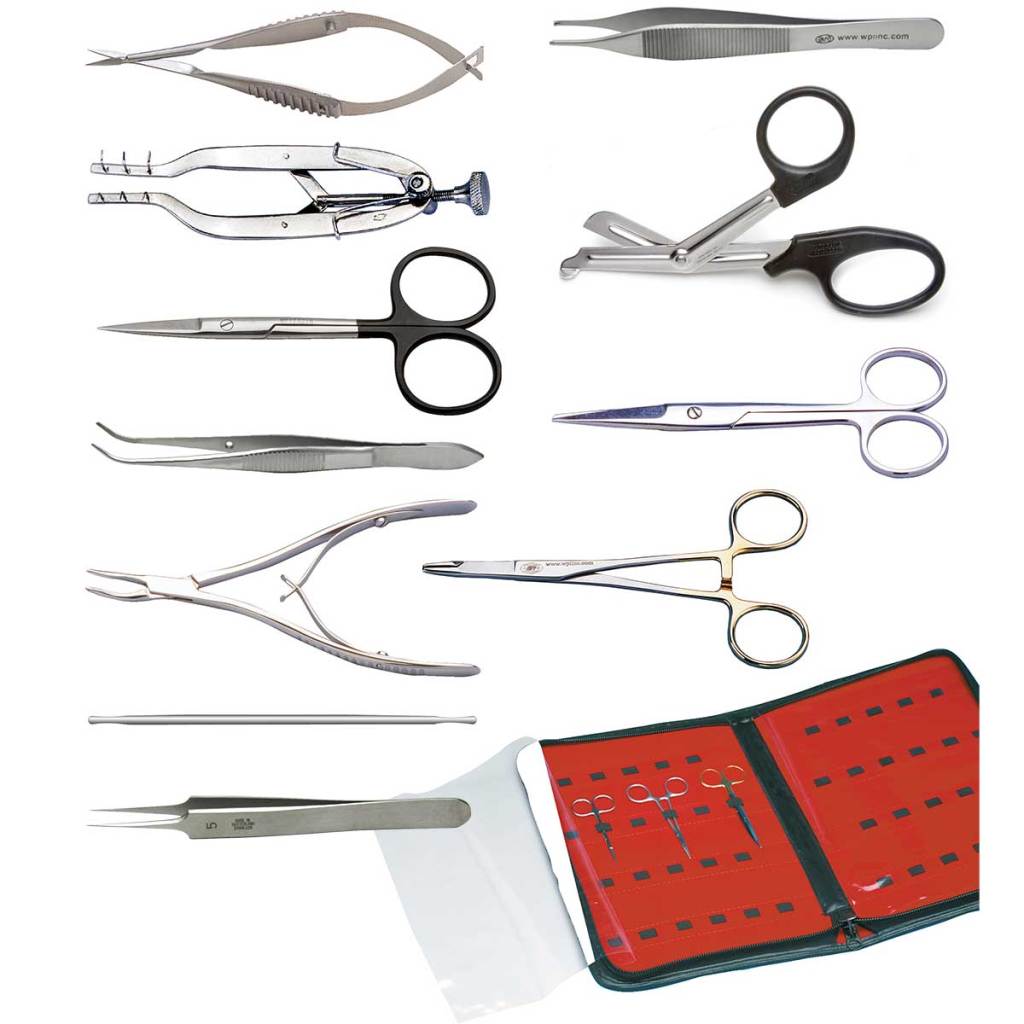Surgical tools are an expensive yet vital element for surgery professional and medical students as well. So, keeping it safe is very important. Surgical tools mainly comprise stainless steel, titanium, cadmium, etc. all these are guaranteed as rust-free or stain free. But after a certain time corrosion of instruments is observed which can be prevented if proper care and maintenance are done. These factors also save for re-investment on tools.
The brown-orange color of stain and rust both appear on surgical tools which makes it difficult for users to distinguish the two apart. Both may appear the same but understanding that whether the mark is rust or stain is important as the cleaning process is different for the surgical tools. The correct process can only be followed when the identification can be done in order to reuse the surgical tools.
Main points to remember for preventing corrosion of instruments are-
The quality and thickness of the outer layer which is protected by the layer of iron or chromium oxide is a major factor behind the resistance power against corrosion or stain. 300 and 400 series of stainless steels are used for manufacturing surgical tools. The passive layers of the surgical tools are the thin film that forms on the surface on non-corrosive steel when it comes in contact with oxygen. But these are highly resistant to many chemical substances. They get destroyed when they come in contact with NaCl (sodium chloride). So, keeping instruments away from NaCl is important and dipping directly into tap water that is the hard water must not be done as it consists of NaCl.
After surgery, the stains of blood or any other residues that consist of chloride ions must be cleaned immediately. Because keeping them without cleaning for a long time can create stains on it which would be difficult to remove afterward and also decrease the sharpness of the instruments.
When the bloodstains gets dry on instruments and get heated for sterilization purpose then these blood causes rust on instruments so this needs to be looked after.
After cleaning the surgical tools they should be allowed to dry thoroughly, if it is stored with the wet conditions, then it becomes more prone to rust or corrosion.
Instruments must be sterilized after cleaning because when it is done before cleaning than removing the stains becomes difficult. Autoclave and dry-heat are mainly used for sterilization process; they can only sterilize the instrument but doesn’t cleanse them, so this is a major point to remember. Certain disinfectant chemicals that are referred for disinfecting the instruments include – Chlorine, Hydrogen peroxide and chlorhexidine.

Using cleanser is also an important factor to keep in mind as the pH value of soaps is different. So choosing a proper cleansing agent must be done on the basis of the pH value, it is recommended to use a neutral soap that is between (7-8.5) pH values for long term results. Acidic soaps accelerate corrosion and alkaline soaps cause spotting and stains.
After surgery, the cleaning process of surgical tools must be started within an hour. As more the cleaning is delayed the chances of getting spots and stains become higher. Even in that situation the growth of bacteria, viruses, and parasites also increases. Each curve and teeth of the instruments must be deeply cleansed and dried.
Now, the ultrasonic cleaning of surgical tools is considered as one of the best processes for cleaning the surgical tools. The machines that are used for ultrasonic cleaning creates sound waves that make micro-bubbles and make sure that the instruments are fully dipped into solutions to make them thoroughly clean. Then, rinse them with cold water to remove the solution and other debris and dry them with a surgical towel or any wrapping material or drapes. It should be ensured that the same instruments are cleansed at a time as if surgical scissors are cleaned then forceps must be cleaned separately. Even blade instruments must be cleaned separately.
Lubrication is yet another process for keeping instruments safe from stains. Lubricating the instruments makes it easier to remove dirt from the surgical tools and keeps them clean and disinfected.
Different colors of stains are brown-orange, dark brown, bluish-black, bluish-gray, black, and gray.
The process to distinguish between rust and stains on surgical tools
- It is important to know that stains can be removed but rust can cause permanent damage.
- There is a method to distinguish between stains and rust and that is through an eraser.
- Rub the eraser over the brown-orange spot if it is removed then it is stain and if that gives discoloration with a mark then it is rust.
Function tests on surgical tools at regular intervals are also important to check whether instruments are properly working or not. Like for clamps, drop tests, for scissors they test that it is sharp enough and the movement of scissors is smooth or not. Like this many other tests are conducted like hygiene is maintained, needles are changed after every use, forceps are working properly or not, etc.
